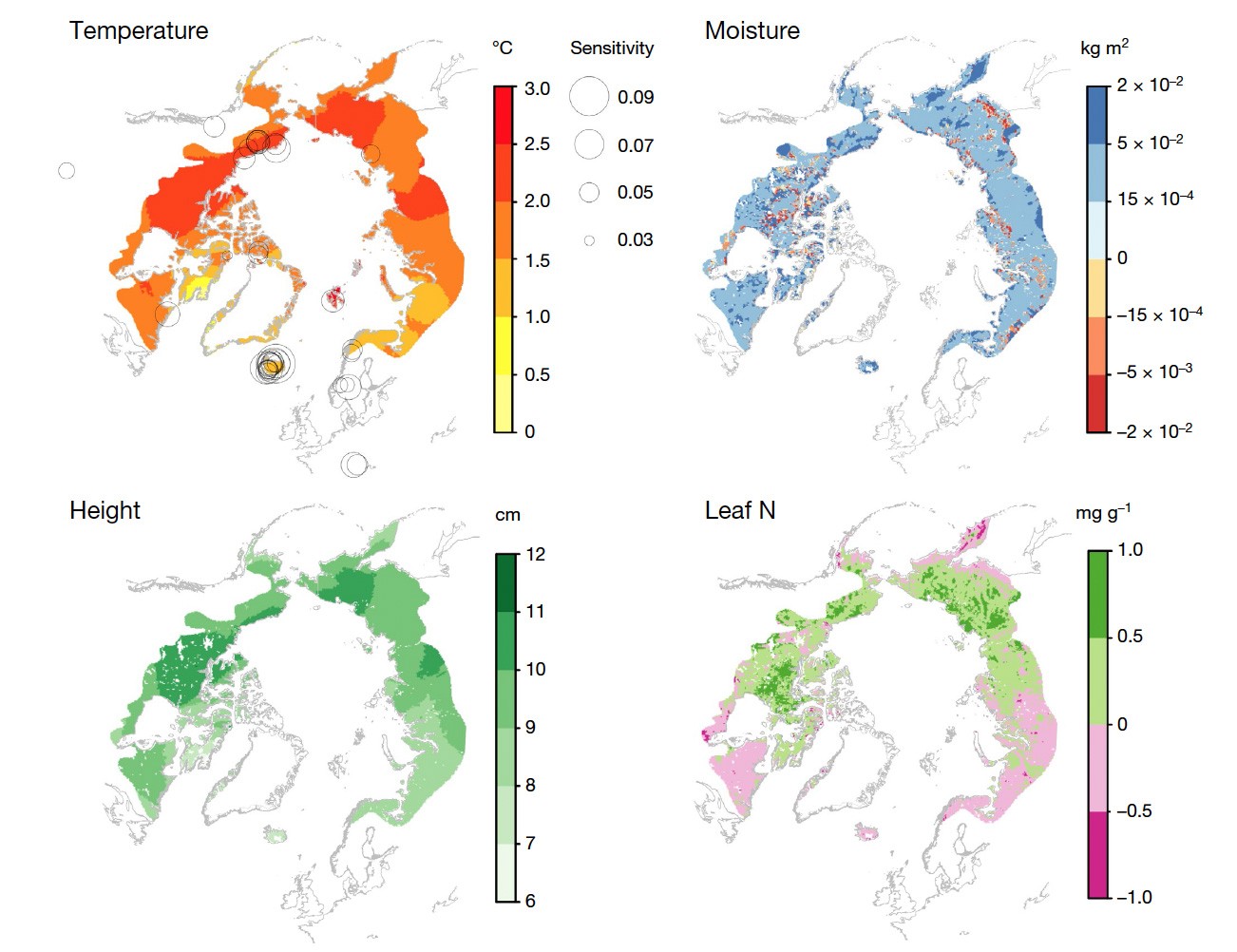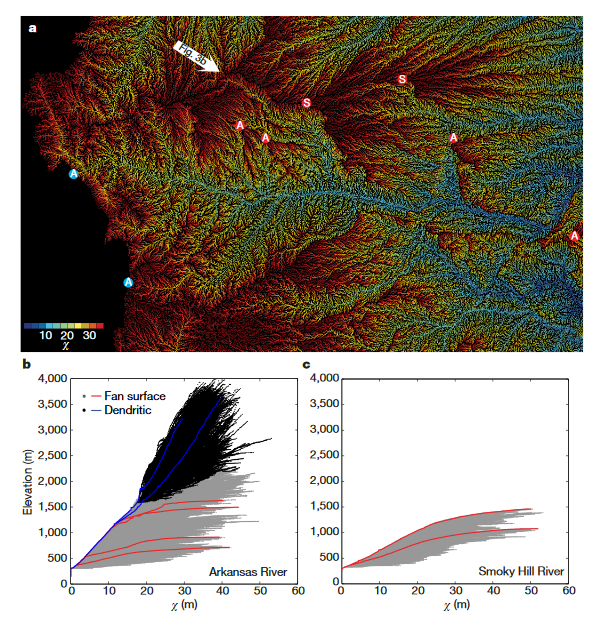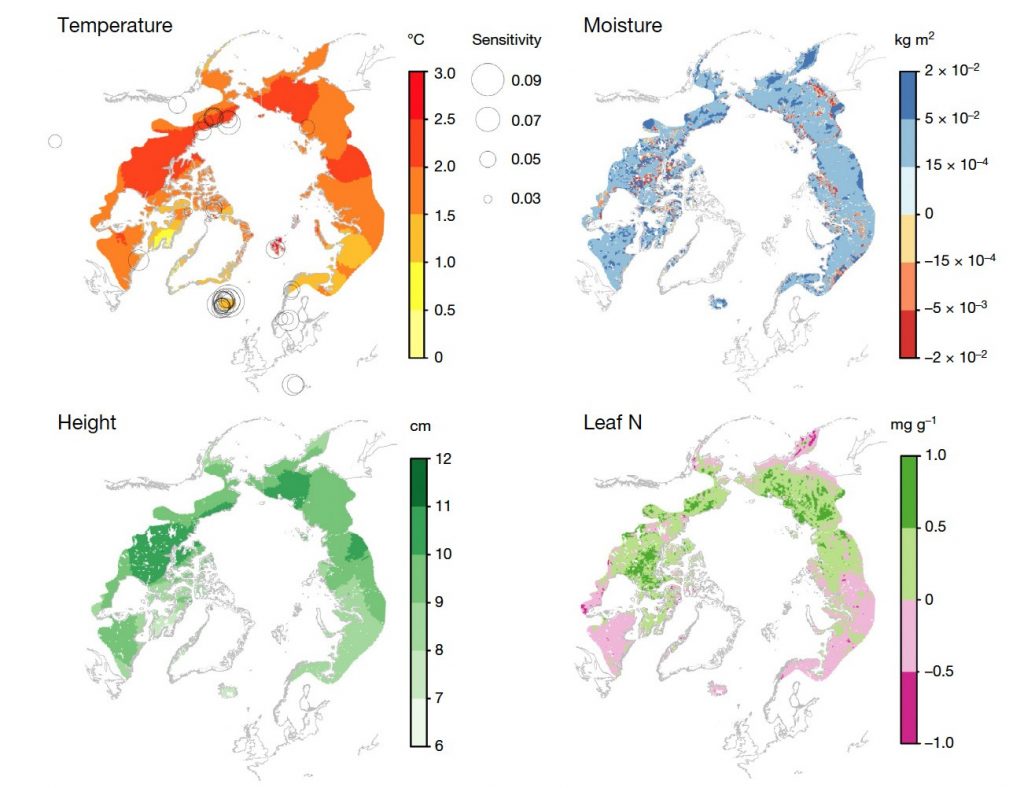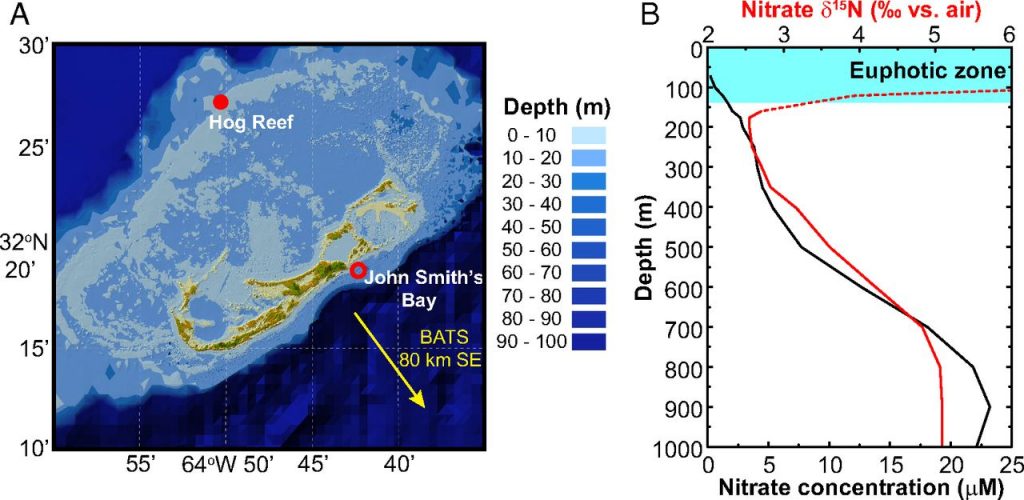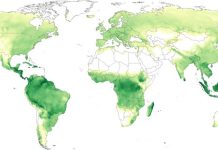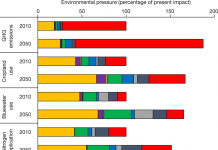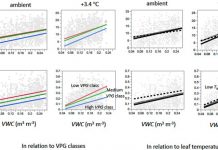【北美高原景观对地表水的影响】Sean D. Willett, Scott W. McCoy & Helen W. Beeson. Transience of the North American High Plains landscape and its impact on surface water. Nature volume 561, pages528–532 (2018)
Abstract
Ecosystem diversity and human activity in dry climates depend not just on the magnitude of rainfall, but also on the landscape’s ability to retain water. This is illustrated dramatically in the High Plains of North America, where despite the semi-arid modern and past climate, the hydrologic conditions are diverse. Large rivers sourced in the Rocky Mountains cut through elevated plains that exhibit limited river drainage but widespread surface water in the form of ephemeral (seasonal) playa lakes1, as well as extensive groundwater hosted in the High Plains aquifer of the Ogallala formations2. Here we present a model, with supporting evidence, which shows that the High Plains landscape is currently in a transient state, in which the landscape has bifurcated into an older region with an inefficient river network and a younger, more efficient, river channel network that is progressively cannibalizing the older region. The older landscape represents the remnants of the Ogallala sediments that once covered the entirety of the High Plains, forming depositional fans that buried the pre-existing river network and effectively ‘repaved’ the High Plains3,4,5,6. Today we are witnessing the establishment of a new river network that is dissecting the landscape, capturing channels and eroding these sediment fans. Through quantitative analysis of the geometry of the river network, we show how network reorganization has resulted in a distinctive pattern of erosion, whereby the largest rivers have incised the older surface, removed fan heads near the Rocky Mountains and eroded the fan toes, but left portions of the central fan surface and the Ogallala sediments largely intact. These preserved fan surfaces have poor surface water drainage, and thus retain ephemeral water for wetlands and groundwater recharge. Our findings suggest that the surface hydrology and associated ecosystems are transient features on million-year timescales, and reflect the mode of landscape evolution.
【气候变暖对于冻原生物群落植物功能性状的改变】Anne D. Bjorkman, et al. Plant functional trait change across a warming tundra biome. Nature volume 562, pages57–62 (2018)
Abstract
The tundra is warming more rapidly than any other biome on Earth, and the potential ramifications are far-reaching because of global feedback effects between vegetation and climate. A better understanding of how environmental factors shape plant structure and function is crucial for predicting the consequences of environmental change for ecosystem functioning. Here we explore the biome-wide relationships between temperature, moisture and seven key plant functional traits both across space and over three decades of warming at 117 tundra locations. Spatial temperature–trait relationships were generally strong but soil moisture had a marked influence on the strength and direction of these relationships, highlighting the potentially important influence of changes in water availability on future trait shifts in tundra plant communities. Community height increased with warming across all sites over the past three decades, but other traits lagged far behind predicted rates of change. Our findings highlight the challenge of using space-for-time substitution to predict the functional consequences of future warming and suggest that functions that are tied closely to plant height will experience the most rapid change. They also reveal the strength with which environmental factors shape biotic communities at the coldest extremes of the planet and will help to improve projections of functional changes in tundra ecosystems with climate warming.
【人类世北大西洋氮循环的自然驱动】. Natural forcing of the North Atlantic nitrogen cycle in the Anthropocene. PNAS, doi:
Abstract
Human alteration of the global nitrogen cycle intensified over the 1900s. Model simulations suggest that large swaths of the open ocean, including the North Atlantic and the western Pacific, have already been affected by anthropogenic nitrogen through atmospheric transport and deposition. Here we report an ∼130-year-long record of the 15N/14N of skeleton-bound organic matter in a coral from the outer reef of Bermuda, which provides a test of the hypothesis that anthropogenic atmospheric nitrogen has significantly augmented the nitrogen supply to the open North Atlantic surface ocean. The Bermuda 15N/14N record does not show a long-term decline in the Anthropocene of the amplitude predicted by model simulations or observed in a western Pacific coral 15N/14N record. Rather, the decadal variations in the Bermuda 15N/14N record appear to be driven by the North Atlantic Oscillation, most likely through changes in the formation rate of Subtropical Mode Water. Given that anthropogenic nitrogen emissions have been decreasing in North America since the 1990s, this study suggests that in the coming decades, the open North Atlantic will remain minimally affected by anthropogenic nitrogen deposition.

